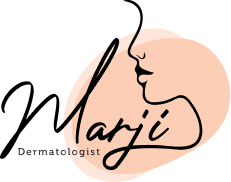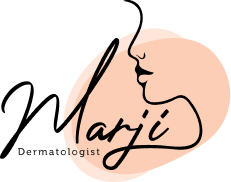There is a number of minimal procedures that fall under micro needling. Such procedures include radiofrequency, derma roller, derma pen, and derma stamp.
What Is Micro Needling?
Micro needling is a cosmetic procedure that involves pricking the skin with tiny needles. In this procedure, the needles go in and out of the skin frequently, which stimulates the production of collagen and elastin in the skin. This helps your skin heal and gives it a younger look. It can sometimes be called collagen induction therapy.
Types of Micro Needling
There are several minimal procedures that fall under the micro needling method treatment. Here are the most important and popular micro needling treatment types:
Radiofrequency
In this type of micro needling, we use tiny needles and radiofrequency waves to rejuvenate facial skin. The radiofrequency waves heat the skin, which damages skin cells. This form of controlled injury results in stimulating the growth of new, healthier skin, which can benefit common skin issues like acne scars and wrinkles.
Derma roller or derma stamps
This type of micro needling employs tiny needles that are attached to a roller, and the roller is rolled on the skin at a certain angle. Derma rollers are usually used when the targeted area is large.
Derma stamps are similar to derma rollers. The needles are attached to a device that has a handle and is inserted perpendicularly in and out of the skin. The number of needles attached to the device depends on the device’s handle; they could be 8, 12, or 36 needles. These types of micro needling help revitalize scarred aging or dull-looking skin.
Dermapen
The derma pen works through a method of puncturing the skin using microneedles to move up and down across the skin, puncturing small holes as it moves. The mechanism inside the dermapen causes the stimulation of healthy collagen and the tiny punctures in the skin to allow for nutrients to be absorbed into the deep layers of the skin.
Why Do We Do Micro Needling?
The purpose behind all the micro-needling procedures is to rejuvenate the skin, treat scars, make pores smaller, and tighten and lift the skin. Moreover, micro needling can help with issues like:
- Acne
- Hair loss (alopecia)
- Scars
- Dark spots or patches on your skin (hyperpigmentation)
- Dilated pores
- Fine lines and wrinkles
- Reduced skin elasticity
- Stretch marks
- Sun damage
Risks of Micro needling
Although micro needling is a safe procedure, it still has some risks to it. Here are some of the things to take into consideration before deciding to try it:
- Time: It will take some time to notice a difference in your skin. That’s because the procedure aims to make your body heal itself. Most patients need a few treatments before they see any change.
- Healing time: It can sometimes take days or weeks for your skin to heal, depending on how deep the needles pierce your skin.
- Pain and redness: You may have minor pain after the procedure, and your skin may remain red for a few days.
- Peeling: Your skin could feel tight and flake a bit while it heals after the procedure.
- Bruising and bleeding: Usually, no bleeding occurs during micro needling. However, deep micro needling treatments may cause the skin to bleed or bruise. The bruising will go away after a few days.
- Possible scarring: People who have had keloids before are not recommended to do micro needling. That is because it could make their condition worse for them.
- Infection: The risk of infection is very low. However, you need to make sure you’re having the procedure done by a professional because micro needling punctures tiny holes in the skin, which could let bacteria enter, especially if the equipment isn’t cleaned well. It is safer to have this procedure done in a dermatologist’s clinic.
What to Expect During the Micro Needling Procedure
The procedure is simple and relatively easy, so it shouldn’t be much to worry about. Here is what you can expect to happen during the procedure:
- The doctor will apply topical anesthesia to the targeted area, then wait for 20-3- minutes.
- After that, the doctor will perform the procedure on the targeted area.
- The doctor might apply a cream or a serum on your face after the procedure.
- The whole process might take from 10 to 20 minutes maximum.
Micro needling procedures are also called lunch-break procedures, which means they’re simple. Patients do not report any intolerable pain. Usually, the pain is minimal and will not cause much discomfort.
Contraindications of Micro Needling
People with the following conditions are not advised to have micro needling done on them.
- Pregnant women.
- Patients who have certain skin diseases, such as psoriasis or eczema.
- Patients who have open wounds.
- Those who have had radiation therapy recently.
- Patients who have a history of skin scars, such as keloids.
What to Expect After the Micro Needling Procedure
There aren’t many side effects to this procedure as it is minimal. After the procedure, redness could occur, but it will improve within a few hours to two days at most. In the days after micro needling, peeling is likely to happen.
If you’re having more than one micro needling session, there should be at least one month or more separating the sessions. There is no certain number of sessions as it depends on the patient’s skin condition. The sessions continue until the patient is satisfied with the results.
Frequently Asked Questions About Micro Needling (FAQs)
This section aims to shed light on the most commonly and frequently asked questions regarding the micro needling procedure.
How many micro needling sessions do I need?
There is no certain number of sessions required for micro needling treatments. However, each skin condition requires an estimated number of sessions. For instance, if the micro needling is done for rejuvenation only, we might need 3 sessions. On the other hand, if we’re treating scars, we might need 5 to 8 sessions. The sessions could continue until the patient is satisfied with the outcome.
What’s downtime like after micro needling?
Downtime after the micro needling procedure is minimal. It can vary from person to person, but generally, the patient might experience mild redness and mild swelling for about 24 hours after their micro needling treatment.
Is the micro needling treatment painful?
Patients typically feel some mild discomfort during their micro needling sessions, but it is not considered painful. However, if you prefer not to feel any type of discomfort, you can request to have topical anesthesia applied to your targeted area.
What should I do after the treatment?
To get the best result out of your micro needling treatment, make sure to follow these instructions:
- Do not go swimming or plunge your face in the water.
- Avoid strenuous exercise or any activities that promote sweating.
- Do not apply makeup or lotions.



